Why you should care about biodiversity
More than just an abundance of species, biodiversity helps shape all of life on Earth - including us.
It’s almost lunchtime, but Jose de Vega, a researcher at Earlham Institute, calls me to catch up about biodiversity over a coffee. I sent him some questions last week, looking for insights which might be useful for this article. Arriving with a pack of files under his arm, a steaming mug and the strong smell of ground coffee, he looks half excited and half somewhere else as we sit down together.
That somewhere else is the dense and remote jungles of Colombia.
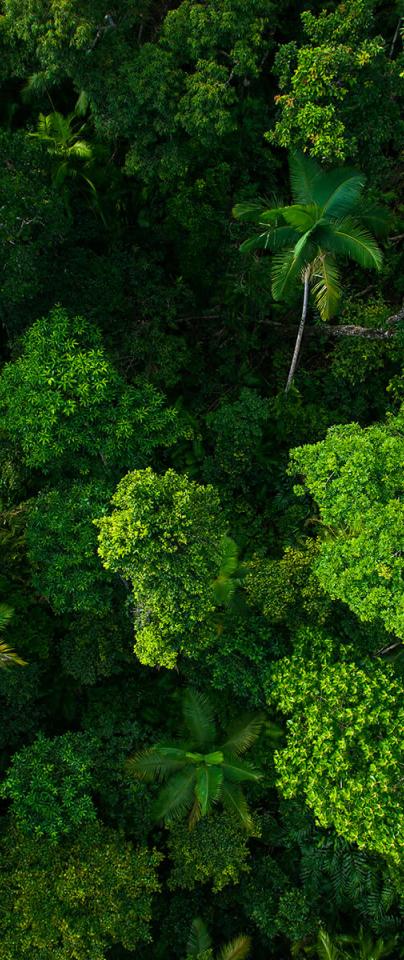
Rainforests are a stunning example of some of the richest biodiversity on earth.
I asked him to think about where he might go, if given teleportation powers, to see biodiversity in action anywhere on earth. “There are more species in one square acre of rainforest than all the combined species of the European continent”, he tells me.
Rainforests are really good if you want to look at a lot of species in one place. With the highest biodiversity of any environment and while covering less than 10% of the earth’s surface, they contain around 90% of all the world’s species. These environments are rightfully a primary target for conservation and protection, and it has everything to do with their biodiversity.
Biodiversity is not just relevant in rainforests. It’s relevant in every ecosystem. From the frozen tundras of Siberia, to the black depths of the Mariana Trench in the Pacific Ocean and even in your own back yard, it enables life to thrive. It works at the genetic level, allowing individual species to adapt to changes in the environment. It acts across whole ecosystems, increasing their resilience to environmental changes, such as disease. With such a profound effect across all of life, it should be obvious that we must care about our biodiversity.
So why don’t we?
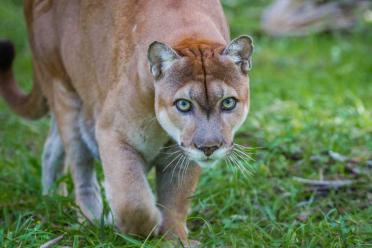
Biodiversity is a contraction of biological diversity. It reflects the number, variety and variability of living organisms and how these change from one location to another and over time. Biodiversity includes diversity within species (genetic diversity), between species (species diversity), and between ecosystems (ecosystem diversity).
Biodiversity is everywhere, both on land and in water. It includes all organisms, from microscopic bacteria to more complex plants and animals.
Definition from greenfacts.org. Visit their website for more information on what biodiversity is.
We cut down vast tracts of forest, mainly rainforest, equivalent to an area the size of Greece, while dumping over 8 million tons of plastic into the ocean every year. It is estimated that by 2050 we will have to increase our food production by 70% to be able to feed the human population. Global warming, driven by our increased industrial output to support the rise of globalisation, is already having a devastating effect on biodiversity. Warming oceans are destroying coral populations in oceans all over the world, which in turn causes reef ecosystems to collapse, along with the species that depend on them. Even the Great Barrier Reef, widely regarded as one of the seven wonders of the natural world, is suffering from coral bleaching due to climate change.
On land, areas which were once rich with fertile soil are becoming hostile deserts at an alarming rate, with native species unable to adapt in time. Our air is polluted with the smog of industry and fossil fuels, the exploitation of which is already responsible for habitat loss across the globe on a scale never seen before. Even agriculture, the very act of feeding ourselves, is pushing back the habitats of almost every species we have so far discovered.

It’s estimated that we have discovered less than 15% of the total species on earth, out of 10 million theorised to exist.

It’s important to remember that we share this planet with some 1.5 million other species - and those are just the ones we know about. It’s estimated that we have discovered less than 15% of the total species on earth, out of 10 million theorised to exist. Good news not just for aspiring ecologists, but also for agronomists, chemists, and pharmacologists. With so much variety across organisms and ecosystems, what benefit does this actually bring us?
Staying healthy is one of the most important concerns in the lives of any living thing, certainly it is for us. 100,000 years ago we had a life expectancy of just 25 years. Today it is closer to 75, thanks in no small part to the advent of modern medicine, which keeps us healthy by fighting a huge range of conditions through the use of vaccines, drugs and therapies. These drugs don’t just appear from nowhere. Up to 80% of the world’s people rely on animal and plant-based medicines, with major breakthroughs in the pharmaceutical industry often coming from looking at the biology and genetics of different species. The drug Quinine, used to treat malaria, comes from the cinchona tree in South America, while investigating Mexican yams in the 1940’s led to the synthesis of key hormones used in birth control pills today.
Areas of higher biodiversity have even been linked to lower rates of disease. Researchers at the University of São Paulo, Brazil, found that greater biodiversity can reduce the chances of a successful transmission of malaria between carrier and host. In this case, the mosquito is the carrier (or ‘vector’, as it is known in research terminology) and humans are the hosts. The researchers found that with higher levels of biodiversity came more species of mosquitoes as well as their favourite biting targets, warm-blooded mammals. The additional mammal species acted as a biological ‘shield’ for humans, as there are simply more things that aren’t humans to bite. The other mosquito species don’t actually carry malaria but still compete with those that do, so less of the total bites carry a risk of malaria for humans. These combined effects of greater biodiversity led to the reduced rates of malaria overall.
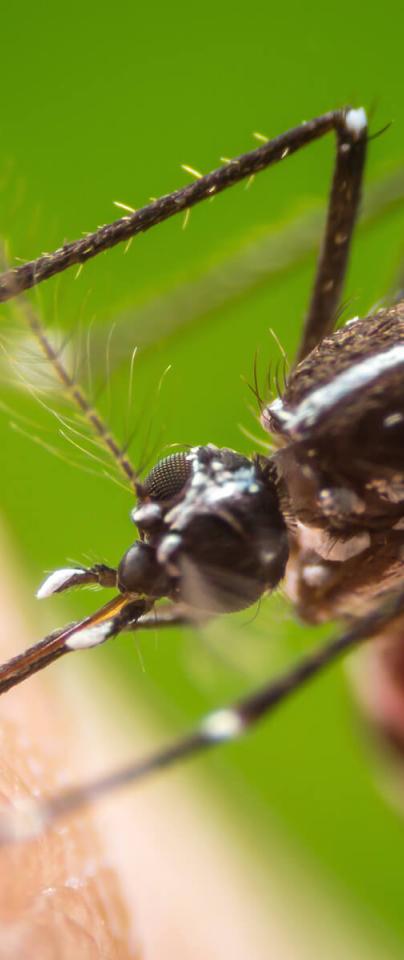
Malaria is a particular issue in sub-Saharan Africa, where mosquitoes spread the parasite through biting the host.
There is also psychological wellbeing to throw into the mix. We have always sought solace in the natural world; a quiet woodland walk or a swim in a clear river on a summer's day. Nature can evoke great peace for us, as the magnificent Hanging Gardens of Babylon can attest, one of the seven wonders of the ancient world built in 600 BCE to cheer up the homesick bride of the great Babylonian king Nebuchadnezzar II. Even just thinking there is greater biodiversity around you can improve your perceived wellbeing, according to a 2012 study.
We can’t ever be fully healthy unless we have a sustainable, nutritious food source. Without biodiversity, feeding the world's population would be extremely difficult - significantly more so than it already is. We rely on around 30 species of plants and animals for nearly 75% of all our food production. This is staggeringly small compared with the 1.5 million species discovered to date, and relying on such a tiny fraction of our global biodiversity has brought about a modern farming system of monocultures. Such monocultures are at great risk on the inside, with genetic uniformity being responsible for huge crop losses over the last 50 years. The loss of a large portion of the Soviet Union's wheat crop to cold weather in 1972 stemmed from reductions in genetic diversity (Reid and Miller 1989). When you have an agricultural system built around 12 key crops, including wheat, barley, rice and maize, and just 15 animals, such as cows, pigs and chickens, anything that threatens these individual species, from disease to flooding and drought, is a potential global disaster waiting to happen.
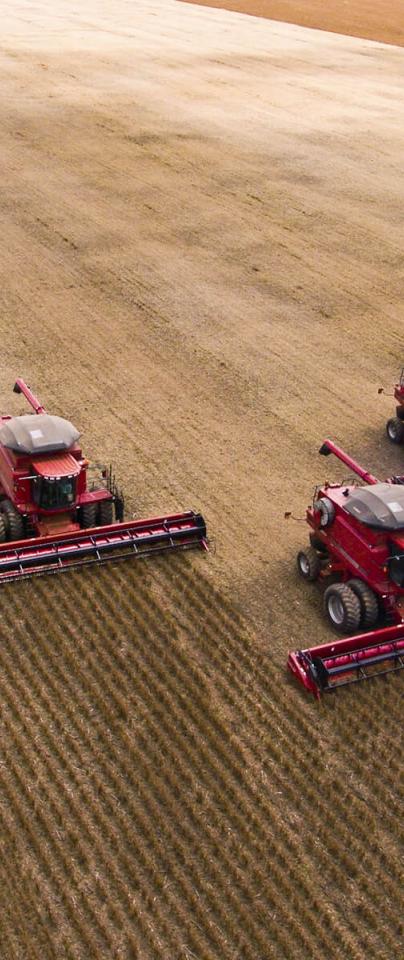
A major challenge to secure global food supplies is finding ways to diversify what we eat.
We are feeling some of these effects right now, with an estimated 40% of all crop production worldwide being lost each year to pests, disease, flooding and droughts. Greater biodiversity can help. Bats alone save corn farmers around $1billion each year by eating pests such as earworm larvae. Agriculture wouldn’t be anywhere at all if it wasn’t for a global army of pollinators, diligently helping countless plant and crop species across the world to reproduce. Bees, wasps, ants, beetles, flies, moths, butterflies and even some birds all contribute to this global task, which is estimated to add $215billion worldwide to our agricultural economy. Pollinators also support human nutrition, with many insect-pollinated plants, such as avocado, mango and potato, providing dietary variety and essential nutrients, such as lipids, vitamins and folic acid critical to a healthy and balanced diet. Vitamin A deficiency is a major human health concern worldwide, taking the lives of over 670,000 children under five annually, and insect-pollinated crops provide about 70% of this vitamin, with pollination directly increasing yields of these crops by over 40%.
Many people around the world also rely on other aspects of our global biodiversity for their food, including the hundreds of millions of people who rely on wild-caught fish for the bulk of their dietary protein each day. Those fish require healthy ocean and river ecosystems in which to thrive, each of which is supported by a huge variety of microorganisms, plants and animals. Reducing biodiversity, whether through overfishing, pollution or climate change, will soon see us catching only jellyfish as major fish stocks collapse totally and irreversibly. This will have devastating consequences for not just our food chain, but for the livelihoods of local fishermen in countries around the world.
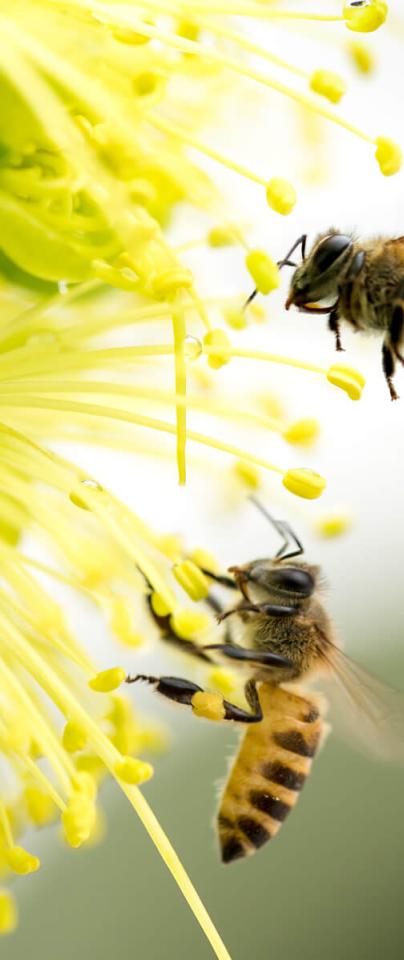
Bees form a major supporting biological role in agriculture across the world.
Our great cycles of air, water, soil and carbon all depend on biodiversity to function. Of the 3000 gigatonnes of carbon dioxide in the air, which is about the same as 30 times the mass of all oil produced since 1850, land-based ecosystems and oceans absorb 50% between them. With the expansion of agriculture and urban development comes a decline in land covered with rainforest, which gets progressively worse at sucking up the CO2 in our atmosphere. Fertile soils are dependent on entire ecosystems and the biodiversity within them, from fungi decomposing dead organic matter into rich nutrients, churned by earthworms, to trees filtering potentially dangerous chemicals and toxins. Without healthy soils, our agricultural systems would collapse. Climate change is driving an increase in ocean temperatures, and acidification as our seas are forced to assimilate more CO2, with the mass bleaching of corals across the globe presenting a stark example.
Warmer temperatures cause corals to expel the algae living in their tissues, which causes them to appear bone-white. Corals and algae are endosymbiotic - they live together in mutual benefit, and when this relationship is disrupted, mortality rates increase. Bleaching can have huge consequences for reef ecosystems and the species that depend on them. Coral reefs alone provide food and protection to over 4,000 species of fish, support local fishing livelihoods and inject over $30billion to the fishing sector and $10billion annually to the ecotourism sector worldwide. They are a source for new medicines, protect against coastal erosion and are a direct source of food for millions of people. Coral reefs are just one example of thousands of different ecosystems that are all critically dependent on healthy biodiversity.
Like a biological insurance policy, greater diversity can buffer ecosystems from changes in the local environment, such as extreme weather or introduced predators. This makes systems more resilient to change, but sometimes even the greatest of diversity can’t help. Over the last century fishing in Lake Victoria, a tropical lake in Africa the size of Ireland, has increased massively. Introduced fish species, such as the Nile perch, have decimated a rich ecosystem home to over 600 species of cichlid fish in what has been described as one of the most rapid mass extinctions in modern geological times. The impressive resilience of these diverse fish has been on full show over the last few decades as their populations have bounced back as the Nile perch has gradually become overfished.
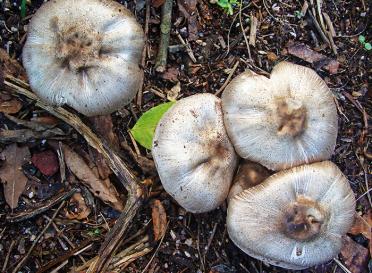
Moving to industry, the productivity juggernaut of modern civilisation, many sectors rely on biodiversity for research, raw materials and inspiration. A thermophilic bacterium, Thermus aquaticus, collected from Yellowstone hot springs provided a revolutionary enzyme used in a process called polymerase chain reaction (PCR), which is vital for modern genetic research. Engineers are constantly inspired by nature, with the Japanese Shinkansen bullet trains modelling their nose on the beaks of Kingfishers, or the Eastgate Shopping Centre in Harare, Zimbabwe, which has a ventilation system inspired by termite mounds.
Biodiversity is also critical for the tourism sector, with ecotourism accounting for an estimated $600billion worldwide each year through visits to national parks, conservation areas and other places of natural beauty. It’s a shame that we spend less than 2% of this amount on protecting and conserving these places for future generations. With over 2.5 billion visits to these areas each year, it’s critical that we keep these ecosystems, and the biodiversity within, healthy and thriving. These amazing places are also inspiring, encouraging people into careers in science, technology and education, or supporting the rich cultural heritage of local biodiversity hotspots, not to mention directly supporting hundreds of thousands of private and public sector jobs.
Many people around the world feel a close bond with their national wildlife and landscapes, and this has permeated cultural practice since the origin of our species hundreds of thousands of years ago. The awe-inspiring cave paintings at Lascaux, France, show a huge variety of exquisitely drawn images dating back some 18,000 years. Ancient Egyptian tombs are adorned with pictograms of scarab beetles, ibis, crocodiles and crops. Tapestries of medieval Europe show deer, wolves and dense forests. Music across the ages has been inspired and continues to be inspired by nature, from Debussy’s ocean-inspired La Mer, to Vivaldi’s Four Seasons and “Nothing but flowers” by Talking Heads. There is even a subfield of music, biomusic, based entirely around sounds sourced from the natural world.
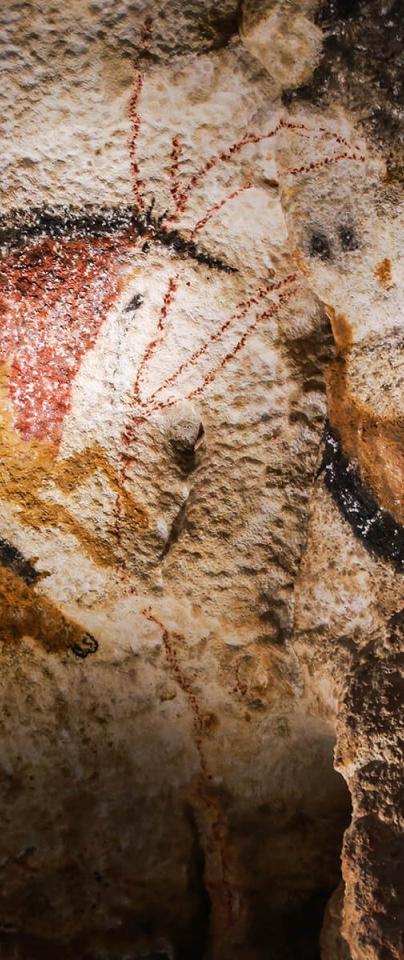
Intricate cave paintings reflect the biodiversity of the time for early man.

Biodiversity is something truly special that we must protect, but before we can do that we need to care about it.

“It’s our moral responsibility to protect our biodiversity,” Jose tells me as we wrap up, our hot drinks not quite so hot any more. “It’s so easy to destroy it, yet can take many, many years to get it back. Sometimes it is lost forever.” That’s why Jose is a scientist. He cares, in a deep and profound way, what happens to this Earth we have found ourselves living on, and being a part of. “So much of life science is based around biodiversity, you cannot do science with it,” he says. As for being based in a country with relatively little biodiversity, the United Kingdom, I asked him how he actually gets to the biodiversity he needs to do his work. “For me, I cannot research biodiversity without collaborating. Biodiversity is everywhere, but particularly across the equator where it is warmer. Life thrives here, more than anywhere else, and because of the climatic conditions you find rainforests, and in rainforests you find the greatest biodiversity, so I must collaborate with researchers who are in these countries.”
I asked him what he thought of Colombia, a country renowned for its wealth of biodiversity, on a recent trip he took there. “The people there know what they have. They know the value of their wild spaces, the animals that live there. They have great pride, and they want to look after it.” Indeed, Colombia has made enormous strides towards protecting its natural heritage, such as doubling the size of the Malpelo Flora and Fauna Sanctuary - partnering with nearby Ecuador and Costa Rica to conserve this special marine reserve.
Biodiversity is something truly special that we must protect, but before we can do that we need to care about it. It’s more than just more. More species, more genes, more environments. It’s more life, of which we are a part, sharing this Earth whether we like it or not. To keep our air clean, the oceans rich and our forests filled with birdsong, we must stand up together and make the changes we need to make, to do the science that we need to do and to develop the political and technological will to ensure that our grandchildren, and their grandchildren, have a healthy and beautiful planet to inherit, long after we have gone.